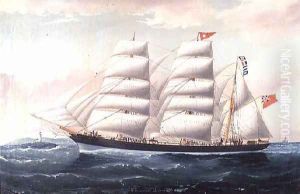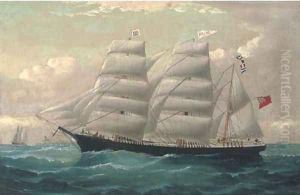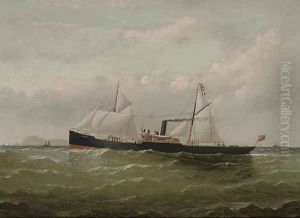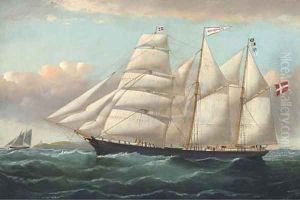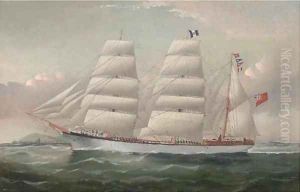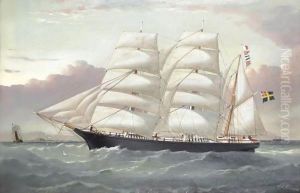William H. Yorke Paintings
William H. Yorke, born in 1847 in St. John's, Newfoundland, and later based in Liverpool, England, is celebrated as one of the 19th century's most distinguished marine artists. Despite the scarcity of comprehensive biographical details, Yorke's legacy is vividly preserved through his exceptional body of work, primarily focusing on maritime scenes that capture the grandeur and drama of the Age of Sail.
Yorke's artistic journey began in an era when the demand for accurate and evocative representations of ships and maritime activities was at its zenith, fueled by the burgeoning maritime trade and the romantic allure of sea voyages. He demonstrated an extraordinary ability to capture not only the intricate details of the ships he painted, including their rigging, architecture, and the texture of their sails, but also the mood and atmosphere of the sea itself. His paintings often depicted vessels against the backdrop of the open sea, bustling ports, or dramatic weather conditions, conveying a sense of authenticity and immediacy that resonated with his contemporaries.
Moving to Liverpool, a significant hub for maritime activity in the 19th century, Yorke found a fertile ground for his work, which catered to ship owners, captains, and maritime enthusiasts who sought accurate and appealing portrayals of their vessels. He became particularly well-known for his ship portraits, a genre that demanded meticulous attention to detail and a deep understanding of maritime craft. Unlike many of his contemporaries, Yorke is noted for his insistence on depicting vessels with remarkable accuracy, often working from detailed ship plans and firsthand observations.
Throughout his career, William H. Yorke remained actively involved in the maritime community of Liverpool, contributing significantly to the visual documentation of the era's maritime history. His works, characterized by their technical precision and artistic sensitivity, are considered invaluable records of the period's shipbuilding achievements and the aesthetic beauty of sailing ships. Yorke's paintings are now treasured in private collections and museums worldwide, serving as a testament to his enduring legacy as a master of marine art.
Yorke's death in 1921 marked the end of an era in marine painting, but his influence persists. His ability to blend technical accuracy with artistic expression has continued to inspire maritime artists and enthusiasts. His work not only provides a window into the maritime history of the 19th century but also celebrates the timeless allure of the sea and sailing ships. William H. Yorke remains a pivotal figure in the annals of marine art, whose work continues to captivate and enchant audiences with its beauty and historical significance.
